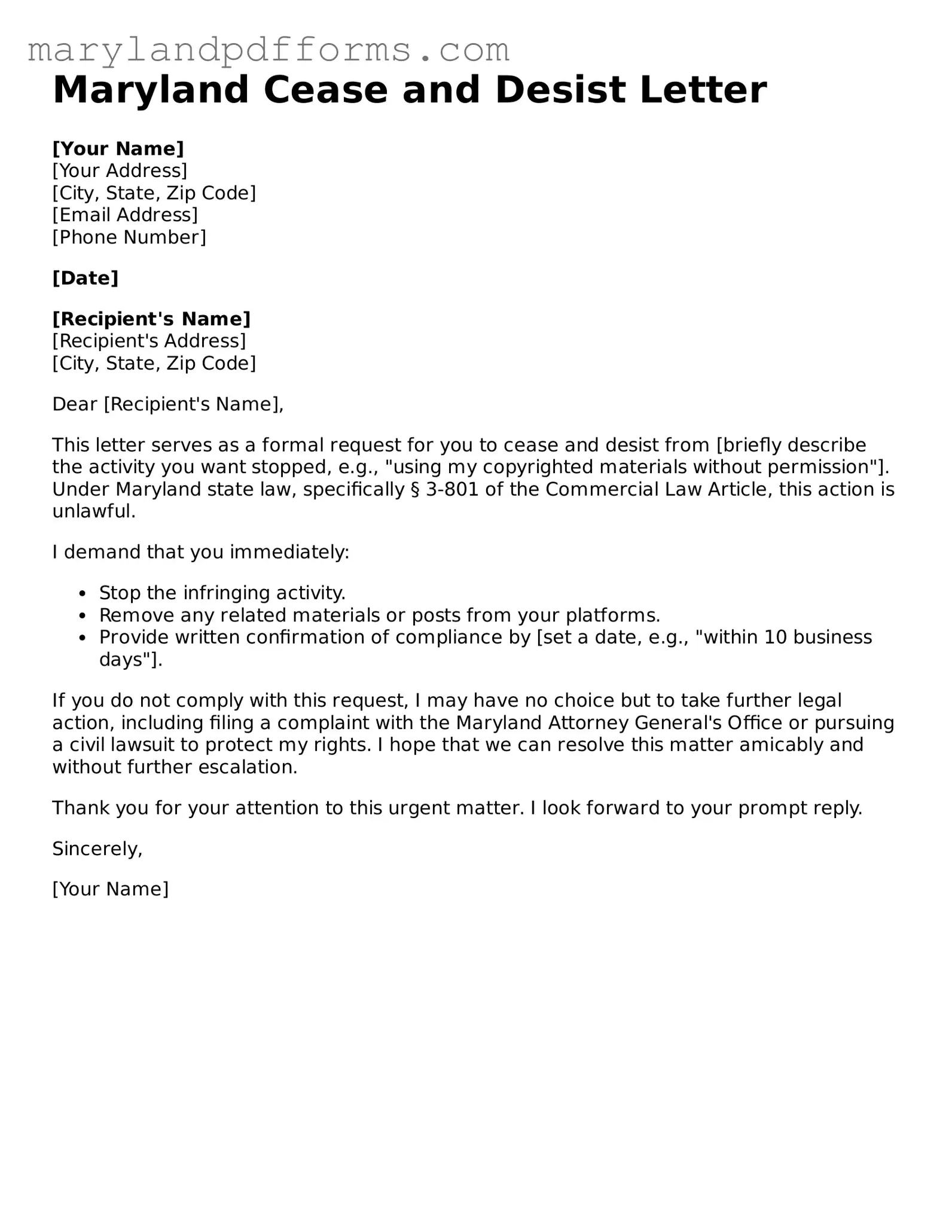Free Cease and Desist Letter Document for the State of Maryland
A Maryland Cease and Desist Letter form is a legal document used to formally request that an individual or organization stop a specific action that is deemed harmful or unlawful. This letter serves as a preliminary step before pursuing further legal action, helping to resolve disputes amicably. If you believe your rights are being violated, consider filling out the form by clicking the button below.
Fill Out Cease and Desist Letter Now
